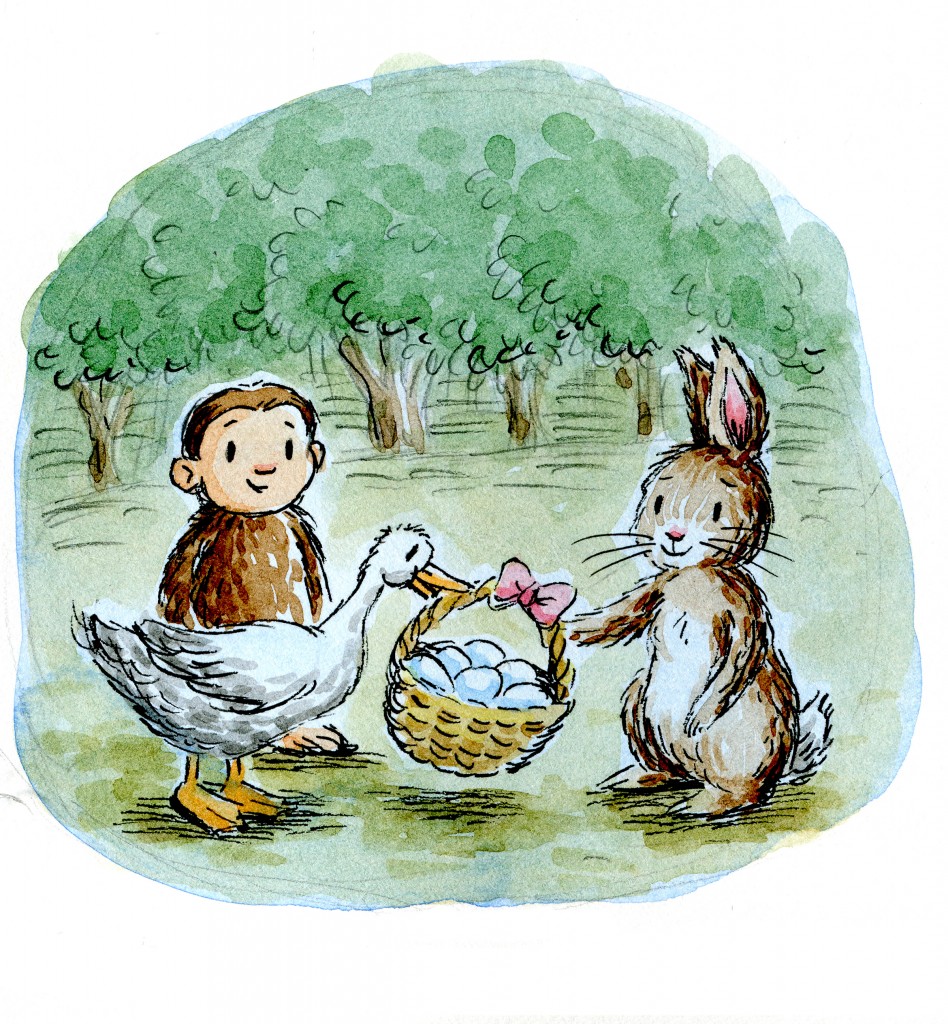Where did the Easter Bunny Come From?
The Easter Bunny – who is he? Why is he a part of our Easter tradition? How did a hippity-hoppity rabbit bringing colored eggs become associated with a serious event like Easter? Many historians believe the bringing of eggs is symbolic of the coming of spring and new life. But why the rabbit? Is he entirely pagan as some say he is, having nothing to do with Easter, but originally selected as a sign of spring because of his fertility? Or is there, in some remote recesses of history, a more imaginative, appropriate explanation?
Several years ago, while researching Easter traditions for a newspaper article, I came upon an Indian legend, which purported to explain “why” there is a rabbit at Easter. The legend told of four animals who went into the forest to live a solitary religious life and the honor Budha paid to one of those animals—a rabbit, who achieved the highest sign of the holy life in that he was willing to sacrifice himself for another. As a result of this honor, the rabbit was taken to live on the moon where everyone can see him and honor him to this day.
Shortly after reading this legend, the first full moon appeared. Sure enough, on the west side of the moon there was a dark patch in the shape of a rabbit.
I wrote the feature article for the newspaper, but instead of that being the end of it, I found myself thoroughly intrigued by the coincidences existing between the Easter tradition and the Indian legend. First, the theme of giving oneself for another’s need. It was a definite echoing of the Easter story itself. Second, the part played by the moon. It was obvious that the Indian legend was originally inspired by this rabbit on the moon, and coincidentally the day on which Easter comes each year is determined by the first full moon after the advent of spring. Was it possible that as men watched for the full moon to determine when Easter would fall, they also spotted the rabbit and decided to make him a part of the Easter tradition? Was the Indian storyteller the only one who saw the rabbit in the moon?
Too many coincidences persisted for the story to be ignored. For a child, and even for some adults, it seemed a delightful way to fully integrate the Easter Bunny into the Easter tradition. However, since the Indian legend included many things that children of our culture would have a difficult time understanding, I have used it as only a skeleton outline for the Bunny Side of Easter, turning it into a children’s story and translating it into a Christian context, hoping that as a consequence, children might enjoy the story of the rabbit in the moon and increase their understanding of the Easter theme as well.
Why is there an Easter Bunny? Perhaps the rabbit in the moon played a part in his conception; perhaps it did not. Whatever the true facts of its history, I submit this story to you as a small offering to the anthology of children’s books for Easter to add to the tradition of Easter, a tradition which has for too long told us too little about that important personality who hides Easter eggs about our backyards every year.


